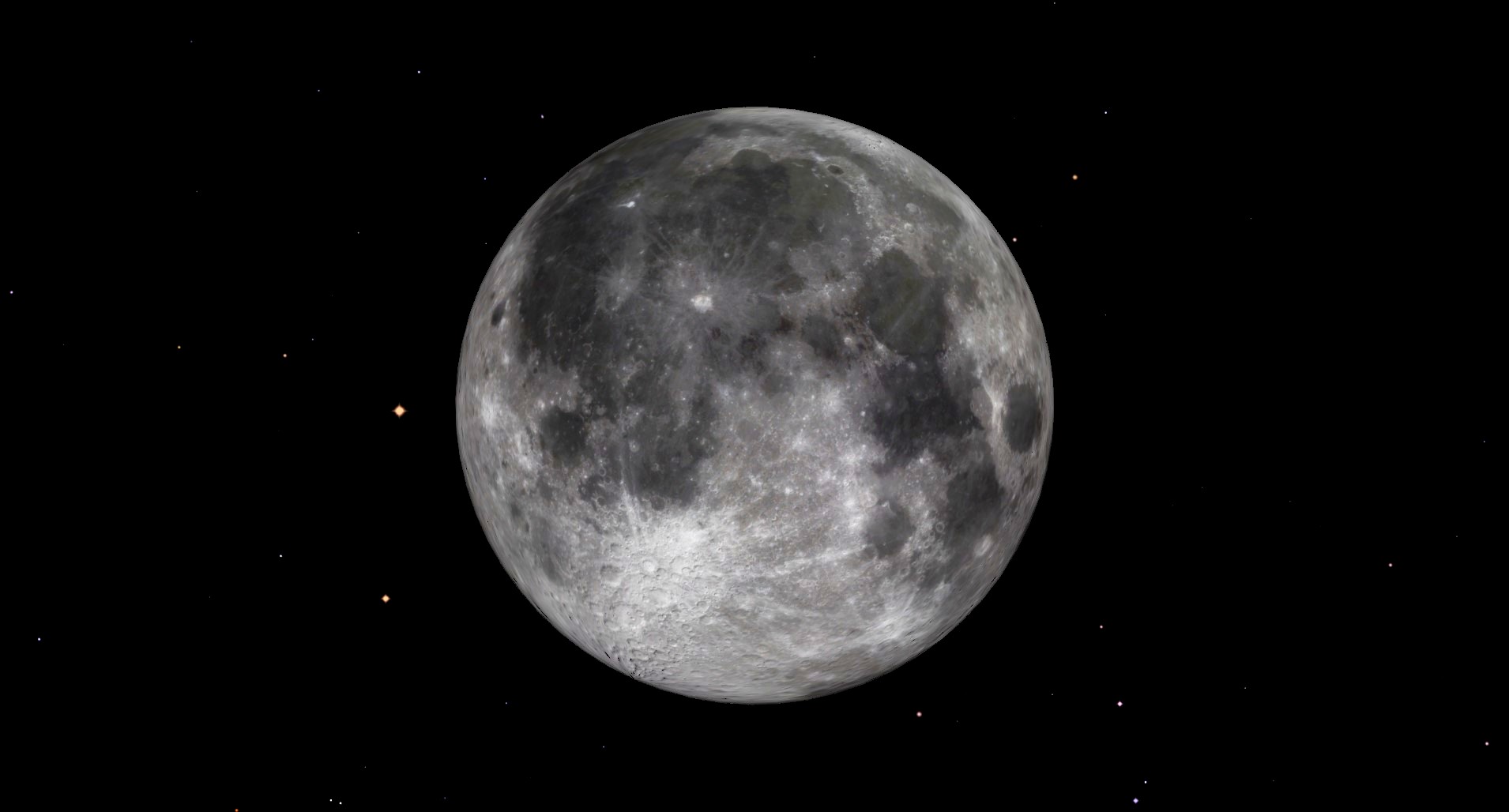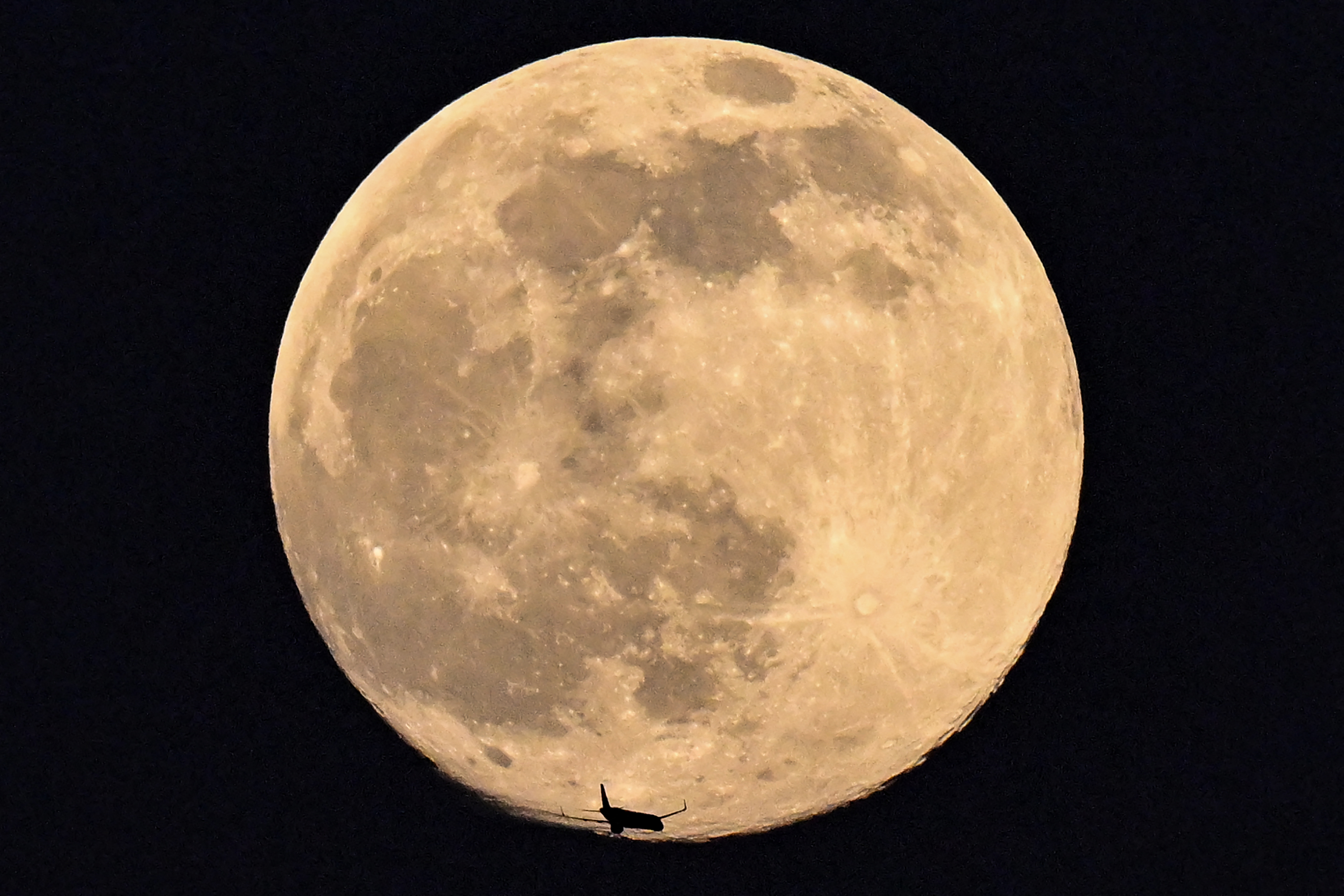Don't miss March's Full Worm Moon in the sky tonight
The early bird gets the worm this month.

Update for March 7: Today's webcast of March's Full Worm Moon has been canceled due to weather.
March's full moon reaches its peak in the early hours on Tuesday (March 7) with the so-called Worm Moon rising just after sunset on Monday.
According to In the Sky from New York City the moon will rise at 5:03 p.m. EST (2203 GMT) and will set at 7:03 EST a.m. (1203 GMT), meaning it will be visible through the night from dusk until dawn. However, the moon will rise again on Tuesday (March 7) at 6:09 p.m. EST (1109 GMT) at over 99% illumination, looking full to most observers.
If you can't make it out early enough to see the Full Worm Moon (or nearly full), there's no need to fret. The Virtual Telescope project will host a livestream of the Full Worm Moon shining over Rome on Tuesday (March 7) beginning at 1:30 p.m. EST (1830 GMT). Watch it live via the project's websiteor YouTube channel.
Related: March full moon 2023: The Worm Moon shares the sky with Venus, Jupiter and Mars

Looking for a telescope to see the features of the full moon up close? We recommend the Celestron Astro Fi 102 as the top pick in our best beginner's telescope guide. Don't forget a moon filter!
During the build-up to the Worm Moon and since the completely dark new moon, which occurred on Feb. 20, the illuminated face of the moon has been increasing to the point at which it is fully illuminated — a process astronomers call "waxing." As this occurred the moon has been rising and setting an hour later each night.
Following the Worm Moon, the opposite process will now occur. The moon will be "waning" as its illuminated face recedes and it rises an hour earlier each day. By the time it reaches the next new moon and the start of a new 29.5-day lunar cycle on March 21, the moon will be completely dark and will rise and set with the sun, meaning it is visible through the day but disappears at night.
Get the Space.com Newsletter
Breaking space news, the latest updates on rocket launches, skywatching events and more!
Read more: What is the moon phase today? Lunar phases 2023

The names for full moons are generally related to the months for the seasons in which they occur, with some, such as December's Cold Moon having quite obvious inspiration. March's full moon has one of the more unusual monikers in the catalog of full moon names.
For many years it was believed that "Worm Moon" referred to the fact that earthworms appear at this time as the soil begins to warm. This leads to birds coming to the ground feed, generally considered a sign of spring.
More recently it has been discovered that the name may relate to a different species of worm, with evidence emerging that Native American tribes connected the March full moon with the emergence of beetle larvae. These creatures begin to emerge in spring as the bark of trees and their other hideouts begin to thaw.
March's full moon has several other alternative names, including ones that there also Native American and also relate to the emergence of animals like the Eagle Moon, the Goose Moon (Algonquin, Cree), and Crow Comes Back Moon.
Other March full moon names also refer to the natural world, the "Sugar Moon" marks the time of year during which the sap of the sugar maple tree flows. The "Wind Strong Moon" refers to strong winds that come at this time of year, while the "Sore Eyes Moon" references blinding sunlight reflecting from melting snow.
If you're hoping to catch a detailed look at the Worm Moon during the close encounter our guides for the best telescopes and best binoculars are a great place to start.
If you're looking to snap photos of the night sky, check out our guide on how to photograph the moon, as well as our best cameras for astrophotography and best lenses for astrophotography.
Editor's Note: If you snap the Worm Moon and would like to share it with Space.com's readers, send your photo(s), comments, and your name and location to spacephotos@space.com.
Join our Space Forums to keep talking space on the latest missions, night sky and more! And if you have a news tip, correction or comment, let us know at: community@space.com.

Robert Lea is a science journalist in the U.K. whose articles have been published in Physics World, New Scientist, Astronomy Magazine, All About Space, Newsweek and ZME Science. He also writes about science communication for Elsevier and the European Journal of Physics. Rob holds a bachelor of science degree in physics and astronomy from the U.K.’s Open University. Follow him on Twitter @sciencef1rst.









